Over on Instagram, there’s a movement called #slowfashionoctober happening. It’s about more than just showing off the clothes you’ve sewn or knitted. There’s an important discussion about consumption patterns bundled with it, a lot of thoughtful people taking stock of what they have, considering who made it and how, acknowledging that they have too much and thinking about how their wardrobes could do more with less, committing to vote with their dollars for companies that create fashion sustainably and fairly, strategizing about how to defuse the desire to own more pretty new things. I’m very much in that headspace myself these days and I’m glad to see this unfolding in my online community.
Yesterday Bristol Ivy, whose open eyes and brave smart mouth I’ve long admired, asked us all to take a look at what this stance means in terms of our privilege, to think about who can afford slow fashion and who can’t. About who’s left out when we’re all crooning over our beautiful sweaters knit with small-batch yarns from sheep with names, because those skeins sell for the real cost of production to the farmers and local mills and dyers—none of whom is getting rich in this business—and that cost is just too great. You can read her post on Instagram, where she’s @bristolivy, and the comments from many people reacting with gratitude that she was willing to broach the topic of inequality and adding important points of their own. Ysolda Teague draws attention to economic research that shows we spend about the same portion of our income on clothing as our forebears did… but we have many more items. The trouble isn’t that quality costs too much, it’s that we’ve developed a whole culture that depends on clothing being cheap and disposable. Most people well-off enough to be using computers and smartphones (and thus participating in this conversation) expect to see their friends wearing different clothes from one day to the next. We judge each other’s adherence to trends and use that information to make choices about our social connections, and we do it from the time we’re little children. We all want what looks correct and attractive within our particular milieu. This is pretty basic human psychology, but globalization has made it far easier for people of all income levels to play the game—and at the same old ugly cost to those who manufacture our clothes in unsafe and unjust conditions, but far away where we don’t have to see it or even think about it unless a mill catches fire and kills hundreds of workers trapped inside. Before my generation, making your children’s clothes was the budget-friendly choice. Today I can buy my son a shirt for less money than the yard of fabric required to sew it. The math has gone seriously askew—it can’t be this advantageous to me unless someone’s in an appalling deficit at the making end. No wonder people want to get out of this current and class off in a nice little slow fashion eddy where everything is fairly sourced and so timelessly well crafted it will last for generations. I know I do. I have to think it would be better for everyone if we could find our way to a broader culture that valued quality above quantity (or novelty).
But here’s another tangle where I’m stuck. By editing down our wardrobes; making only what’s beautiful, serviceable, and lasting; and avoiding the temptations of the new and the now, we have to rein in our purchasing from the very independent designers, farmers, and other artisans we’re so proud to support. You couldn’t go to a yarn store and find local products fifteen years ago. Independent knitting designers existed only by the handful and relied on self-published paper newsletters to distribute their work. A community of crafters created this market out of thin air because they were willing to put up the money to buy the products even though they cost more. If many of us with the means to buy fairly priced patterns, cloth, yarn, and locally made clothing cut back, what happens to our artisans’ livelihood? How do the Bristols and Ysoldas of our community get to go on inspiring us with their brilliant art? Economists would say a contraction of the market with less successful players being weeded out is just the way things work, but I don’t think we’re so sanguine as a community. We value the human connections and the stories of regular folks living their creative dreams, and we buy from them not just because they make beautiful things but because it feels good. (I’m not sure anybody loves things that feel good more than knitters do. I suspect scientists will someday discover that the crafty gene is right next to the do-gooder gene and the one doesn’t get expressed without the other.)
In a curious alignment of threads, I’ve been digesting a historical example that brings the same questions to light. Last week a splendid book was published in Sweden and flew right ’round the world to my doorstep. It’s the first new material on Bohus Stickning to come out in twenty years, and I have been guzzling it. If you’ve never heard of Bohus knitting before, 1) apologies for the deep dive into geekdom that’s about to ensue; 2) go run a quick Google image search. You’re welcome. The gist of this story is that Bohus Stickning began as a relief effort in the late 1930s, employing rural women in one little corner of Sweden to knit garments for sale. But not just socks and hats and bazaar goods. This company shot the moon. They made gobsmackingly gorgeous couture and sold it to princesses and film stars at astronomical prices, which translated into modest but significant paychecks for the knitters. These sweaters were as exclusive and costly as mink coats, but those who could buy them did, and the artistry that flourished at this tiny little non-profit blows the roof off the whole span of handknitting history before and since. I’m not even exaggerating. Bohus Stickning had a thirty-year run, nimbly responding to fashion trends while continuing to produce wildly original designs so improbably difficult to knit that even experts were deceived about their construction. What sank this company in the end was the first wave of the forces we’ve been trying to beat back with our slow fashion movement. And you know what? The global renaissance of craft in the past two decades—and customers’ renewed willingness to pay for quality—is what has brought Bohus Stickning back in the form of painstakingly reconstructed kits to knit some of the garments yourself. They’re very expensive. They still can’t be for everyone. I wish they could, but there’s no way to cut corners with integrity.
I don’t know the right way forward, or that there is any way forward that’s righter than the rest. I have too much stuff in my closet. Some of that stuff is handmade, and I keep it because it’s handmade even though I never wear it. That’s a piece of preciousness I’ll have to get over. I’m making an effort to pare down and to think carefully about what comes in. I also have too much yarn. It’s mostly very good yarn, because I am one of the lucky ones who can afford to support what I think of as the Knit Local movement. I have exciting plans for nearly all of it, but not enough time to execute those plans. Knowing this will not always prevent me from stashing more irresistible yarn, and apparently my idea of being strict with myself about knitting from the stash I’ve got is to cart home a bag of roving so I can spin another sweater’s worth. (Because that’s a time-saving plan for sure.)
This is what I’d like to do today. It is one small thing, because I can’t begin to address the problems of inequality, exploitation, education, social pressure, corporate transparency, and what have you that freight this conversation, but I also can’t think about all of that and then do nothing. One bag of the good yarn waiting patiently for my attention is a sweater quantity of Brooklyn Tweed Shelter in a heathered charcoal shade called Soot. Ten skeins. If you care about the ideas wrapped up in #slowfashionoctober but can’t indulge in yarn like this, I would like to send it to you. (There, I’ve just pressed your “Whoo! Free yarn!” desire trigger, so if you’re also trying to stash less, I apologize.) But if this offer happens to align with your carefully honed crafting plans and wardrobe aims, send me an email—sarah@wgk.com, only spell out the blog name—with your address and I’ll post the Shelter to the first responder. If it feels right, maybe I’ll do this again with some other good yarn.
To everyone else, keep making what’s useful and beautiful—by your own lights. Keep sharing it with the rest of us. Keep inviting more people into the conversation and noticing the quiet ones. Be generous to each other. Don’t make anyone feel inferior.
ETA: The Shelter has traveled to its new home, but stay tuned—I think I’ll do this again sometime!
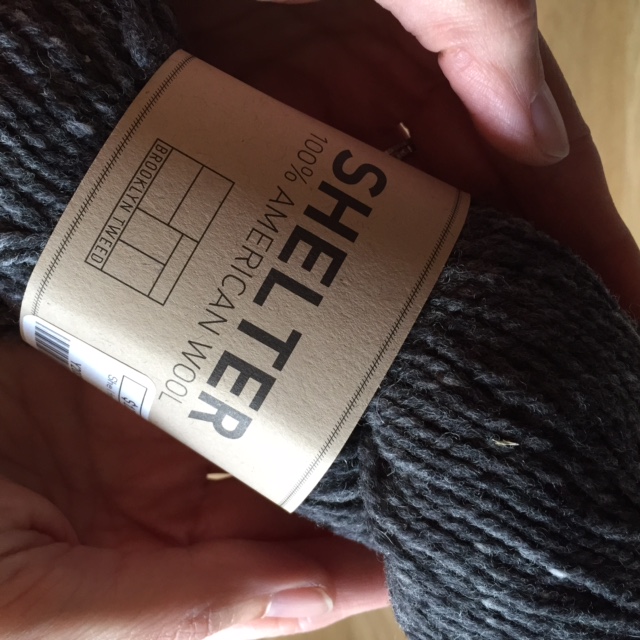
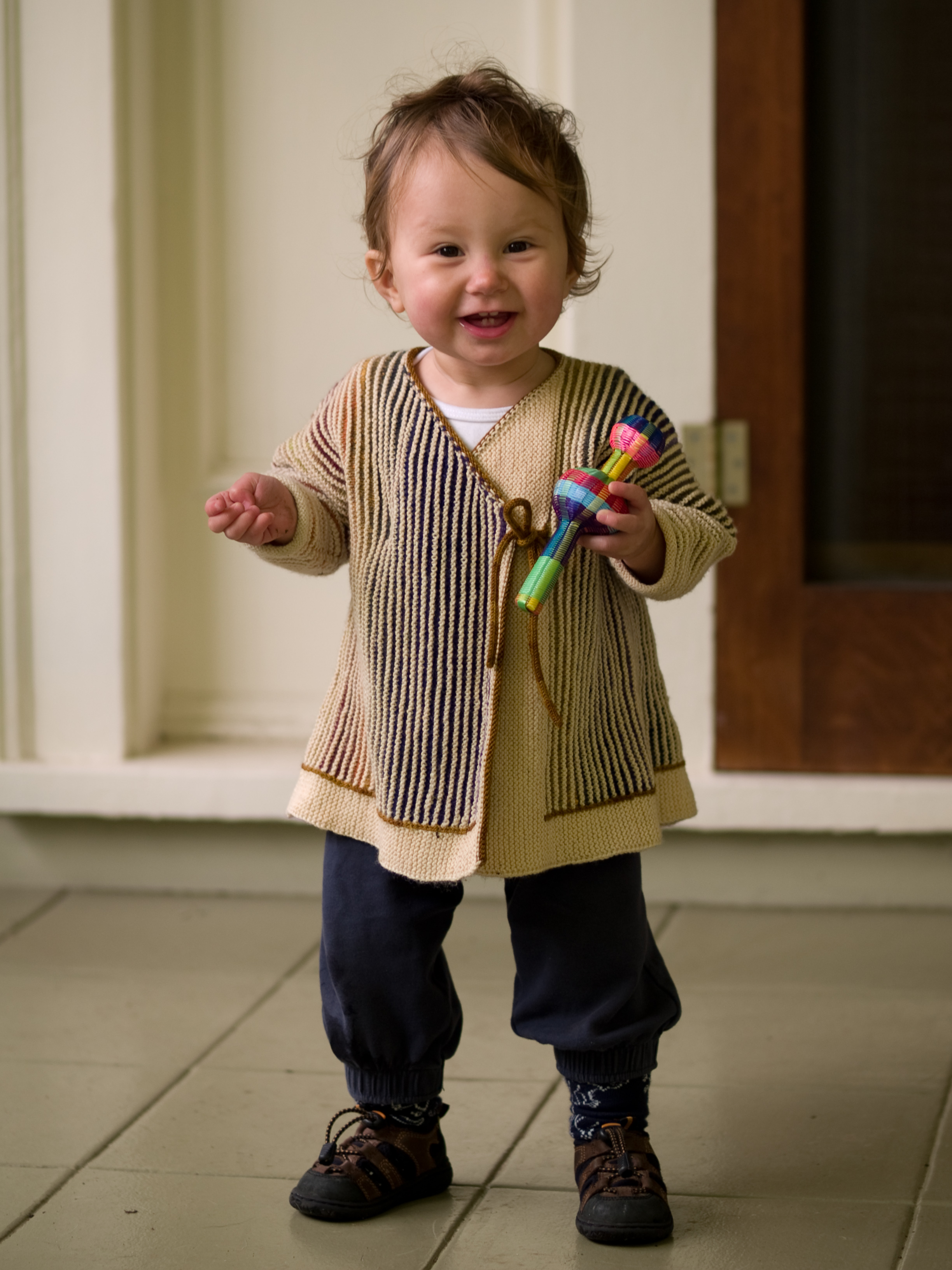
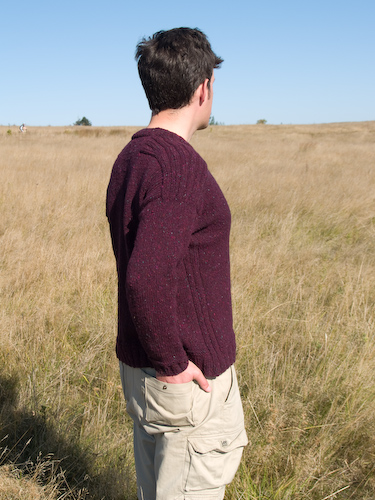
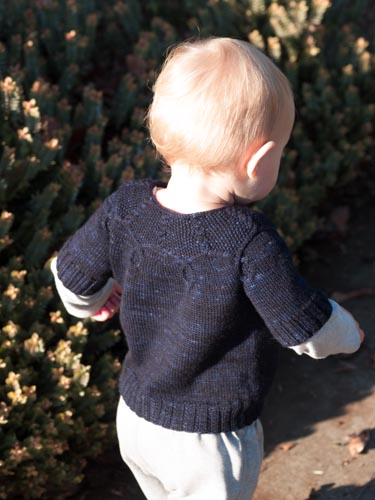

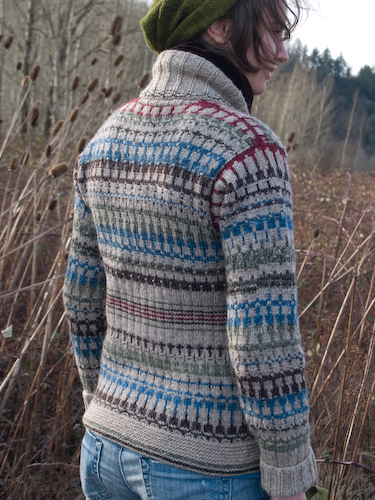
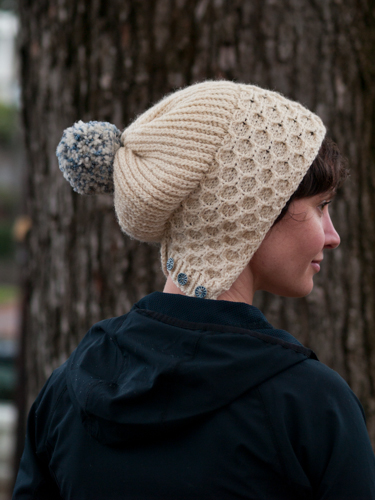
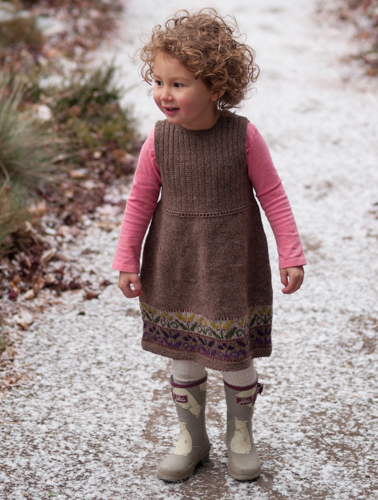
You bring up many of the same points I did on my post last night! Only you did it more eloquently and brought the issue back around to how we support independent designers and yarn makers if we’re all supposed to be buying less. Excellent point. (Also, one reason I take issue with Karen Templer’s points when she does run a retail business herself. It’s a well-curated, beautiful shop full of well-sourced products, but if people quit buying that’s not good for her bottom line, either…)
I don’t want the Shelter. I could afford to buy it if I wanted to, and I’m trying to downsize a bit myself. I just wanted to comment mainly to say thank you for sharing your thoughts. Definitely a lot to contemplate here.
What a beautiful essay. I think privilege is one of those things that once seen, cannot be unseen, and so there is definitely value in bringing it to the conversation. We are all steeped in privileges of various kinds, and there’s no one right way to behave that will erase it.
I think about the issue of exclusion with my own business, but I also know that while I make a luxury product, it’s also an unpopular one. There are never going to be a ton of people wanting them anyway, and I would be perfectly happy with someone saving up to buy just one and having that one be loved and cherished.
I love your generous gesture, and it is exactly the sort of thing that fosters community. I just returned from a weekend with people who enjoy the privilege of a somewhat expensive hobby, but who are so generous and caring that they “spread the wealth around” quite a bit. Some have more than others, whether it be money or talent or time, but they care enough about the other people that it narrows the differences. I hope someone makes something gorgeous with the Shelter!
I do agree with your points regarding the balance between consuming with care and intention and supporting the very people who provide us with the many choices . I am not sure how that particular equation can be balanced. Often, creativity comes from an abundance of choices be it of fine materials or just what is easily available. I love all that goes into making by hand, chiefly knitting and sewing but I have found a resource in thrift sweaters and yarns and if I must try a new yarn, a hat or a cowl is what I will invest in. I do believe in paying for my patterns and supporting independent designers because the time and effort they put in each pattern and I always learn a new skill from each pattern that I use. I would love to try the Brooklyn Tweed yarn you are offering and if you would want to spread your offering, I would love to make a hat or something small for my little guys. Thank you Sarah and I look forward to reading your posts, every single one of them. You give so much to think about while I am knitting!
Sarah – as always when I visit your blog, a lovely, thoughtful post that speaks to me on a number of levels. As some one on the small producer side of things, I am always grateful when someone wishes to spend even a few dollars on something I have crafted with my hands – a validation of my work and but also a way to put food on the table. I find such joy and happiness in creating things – I think that’s part of being human. But I also know not everyone has the funds and time (or maybe interest in the craft) to make their own clothing. You’ve given me a lot of food for thought over this morning’s cup of tea. Thank you!
I really loved Bristol Ivy’s thoughts. I knit several items per year, but have always been hesitant to post them on Ravelry because they’re often made with less expensive yarns that I’m sure many other knitters look down upon. But hey, with a little guy at home (and hopefully more in the future) and one income for the time being because of prohibitive childcare costs that necessitate me staying at home, it’s what fits into our family’s budget. I also prioritize buying healthier, organic food that everyone in the family benefits from over spending money on craft materials for just me (not that other people don’t or should do the same, just sheds light on how we divide up our disposable income).
I’d love to be able to afford more artisan yarn – and don’t even get me started on those CSA’s where you get to follow a sheep and then have its fleece sent to you, how amazing! – but I hope I’m still contributing something to the crafting community by keeping knitting skills alive in my generation.
I hope your generous yarn offer finds a good home! What a lovely gift.
Calli, I hope you’ll post your projects. Really, if people on Ravelry only share the stuff that’s creme de la creme, it skews the picture and ultimately makes even more knitters feel the sense of exclusion and fear of judgment that you’re experiencing. One of my favorite things I’ve ever made is my husband’s Fishtrap Aran, which is made from decades-old Brunswick Ballybrae — far from fancy, but it’s going to last forever and I think it looks every bit as nice knitted up as yarns three times the price. (Well, I got it for free by unraveling a sweater my mother-in-law had started once upon a time, but it’s the equivalent of something like Briggs and Little Regal, which is $6.95 for a 272-yard skein at Schoolhouse Press. I’ll also mention that Briggs and Little is a 150-year-old mill in Canada using 100% domestic wool and being very transparent about their processes; I think they’re completely worthy of anybody’s crafting dollars and I’m heartily glad they’ve been able to survive and go on making quality wool yarns at accessible prices.)
This is a really nice and thoughtful post. I have been following along with the Slow Fashion October from the sidelines and I am not sure I know how to participate. I find with the internet, I have never felt so tempted to buy things and so envious of what everyone has bought or is making. And all of these feel-good yarns let me rationalize my consumption. What to do? I also knit for other reasons too, not just fashion. Sometimes it is about getting over that sad event, or showing my love for my little ones, or procrastination. Yeah, there is that Ph.D. I am suppsed to be finishing, any day now. So fashion doesn’t always come into it. And waiting times, did you know that my big girl does ballet 3hrs a week and skating 2 hrs? And my little girl does ballet and skating too, but not at the same times? Anyways, thanks for this! I like to see what you are up to and the things you support and like.
Well, not all economists would argue that market shrinking is a universal good — efficiency minded ones in which the bottom line is equilibrium of consumer demand and produced supply would, perhaps. One could also argue that the consumption (such as it is) of knitting patterns enables livelihoods of intellectual labor, ‘markets’ with their own challenges, but little inherent physical waste, apart from the electrical energy spent accessing them on devices. When it comes to the material products, there are also economic arguments to be made about the costs of production, the value of the materials, the environmental consequences, the human costs and so forth that would support slower fashion, food, and consumption of all stripes. It’s not *all* so dismal.